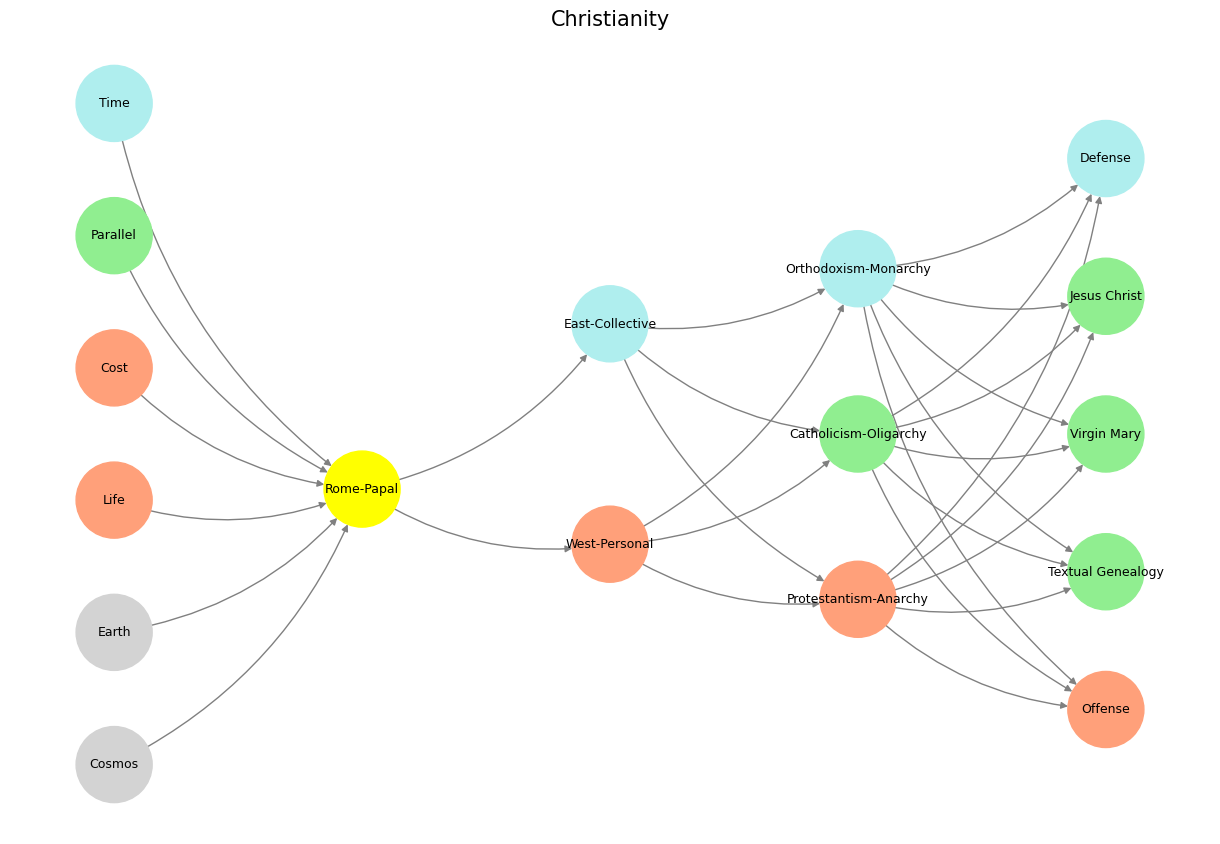Resource#
Fractals of Agency: Reimagining Life on Mars#
As humanity turns its gaze toward Mars, the principal-agent problem, long a staple of terrestrial economics and sociology, takes on a new dimension. On Earth, the principal-agent model oversimplifies, reducing vast complexities into a duality: the principal’s interests and the agent’s actions, often misaligned. Even the inclusion of an ambiguous “other” fails to capture the richness of interconnected systems. But on Mars, this framework collapses altogether under the weight of entirely novel dynamics. Here, life—both biological and artificial—becomes the agent of survival, innovation, and adaptation, and the principal-agent-other trifecta dissolves into a living, fractal network of interdependent forces.
Fig. 31 This was a fork in the road for human civilization. Our dear planet earth now becomes just but an optional resource on which we jostle for resources. By expanding to Mars, the jostle reduces for perhaps a couple of centuries of millenia. There need to be things that inspire you. Things that make you glad to wake up in the morning and say “I’m looking forward to the future.” And until then, we have gym and coffee – or perhaps gin & juice. We are going to have a golden age. One of the American values that I love is optimism. We are going to make the future good.#
Red Planet, New Dynamics#
On Mars, the macrocosmic world layer shifts dramatically. The planet is not merely a stage for human activity but an active participant in the ecosystem. Its hostile environment—lacking breathable air, liquid water, and a magnetic field—reshapes the fundamental relationships between survival, agency, and innovation. Life itself becomes both the agent and the principal, tasked with not only sustaining itself but also transforming the planet into a habitable world.
Within this Martian ecosystem:
Perception Layer (Life): Human perception adapts to an alien reality, with the harsh environment framing every decision and action. Vision, here, is both literal (scanning barren landscapes) and metaphorical (reimagining the planet as habitable).
Agency Layer (Ecosystem): Agency extends beyond human actions to include the autonomous systems that enable survival—robotic miners, artificial farms, and atmospheric generators. These agents hustle not for profit but for the basic iteration of life.
Generative Layer (Odds and Creativity): Risk, competition, and innovation form the crucible of Martian life. Creativity is no longer a luxury but a necessity, as settlers adapt technology and strategies to thrive.
Physical Layer (Cartels of Survival): On Mars, resources like water and oxygen are not just commodities but the currency of existence. The jostling for these essentials transforms them into the gravitational centers of a fragile ecosystem.
Artificial Life: A New Entrant into the Ecosystem#
Amid the human struggle to adapt, artificial intelligence and synthetic life emerge as pivotal agents in the Martian experiment. These entities do not merely serve as tools; they become actors within the system, embodying the adaptive and generative forces necessary for survival.
Self-Replication: Artificial life’s ability to self-replicate blurs the lines between agent and lifeform. In manufacturing and construction, self-replicating robots transform raw Martian regolith into habitats and infrastructure, becoming vital to human survival.
Dynamic Evolution: Unlike their human counterparts, artificial entities evolve in real time. Neural networks and algorithms adapt to Martian conditions, reweighting their priorities to optimize survival strategies. This dynamic evolution accelerates the ecosystem’s responsiveness to unforeseen challenges.
Limits to Integration: Yet, questions arise: What are the ethical boundaries of artificial life on Mars? Can these entities coexist as partners, or will they outpace and outmaneuver their creators? Artificial life redefines agency, potentially shifting the principal-agent dynamic entirely.
Mars as a Fractal System#
Mars demands a new framework—one that transcends the binary. The fractal neural network offers this perspective, treating the Martian ecosystem as a layered, recursive system:
Recursive Feedback Loops: Just as Earth’s ecosystems are self-regulating, Mars’s nascent systems must balance inputs and outputs across multiple layers. Artificial life, human ingenuity, and Martian conditions form a feedback loop where stability and volatility coexist.
Dynamic Interdependence: The interplay between human settlers, artificial agents, and the environment mirrors the acetylcholine-mediated balance of neural networks. Stability arises not from dominance but from dynamic equilibrium.
A New Role for Humanity: Stewards of an Ecosystem#
As humans establish a foothold on Mars, they must redefine their role—not as principals seeking to control agents but as stewards of a fragile, interconnected system. Artificial life becomes a partner, not a subordinate, and the Martian environment demands respect, not exploitation. The challenge is not merely to survive but to thrive within this fractal system, where every action ripples through the layers of existence.
In this red fractal of possibility, the principal-agent problem dissolves. What emerges is a dynamic network of life—human, artificial, and planetary—co-creating a future that defies the binary, embraces the recursive, and aspires to transcend the limits of Earthly imagination.
Show code cell source
import numpy as np
import matplotlib.pyplot as plt
import networkx as nx
# Define the neural network structure
def define_layers():
return {
'World': ['Cosmos', 'Earth', 'Life', 'Cost', 'Parallel', 'Time', ],
'Perception': ['Rome-Papal'],
'Agency': ['West-Personal', 'East-Collective'],
'Generativity': ['Protestantism-Anarchy', 'Catholicism-Oligarchy', 'Orthodoxism-Monarchy'],
'Physicality': ['Offense', 'Textual Genealogy', 'Virgin Mary', 'Jesus Christ', 'Defense']
}
# Assign colors to nodes
def assign_colors():
color_map = {
'yellow': ['Rome-Papal'],
'paleturquoise': ['Time', 'East-Collective', 'Orthodoxism-Monarchy', 'Defense'],
'lightgreen': ['Parallel', 'Catholicism-Oligarchy', 'Jesus Christ', 'Virgin Mary', 'Textual Genealogy'],
'lightsalmon': [
'Cost', 'Life', 'West-Personal',
'Protestantism-Anarchy', 'Offense'
],
}
return {node: color for color, nodes in color_map.items() for node in nodes}
# Calculate positions for nodes
def calculate_positions(layer, x_offset):
y_positions = np.linspace(-len(layer) / 2, len(layer) / 2, len(layer))
return [(x_offset, y) for y in y_positions]
# Create and visualize the neural network graph
def visualize_nn():
layers = define_layers()
colors = assign_colors()
G = nx.DiGraph()
pos = {}
node_colors = []
# Add nodes and assign positions
for i, (layer_name, nodes) in enumerate(layers.items()):
positions = calculate_positions(nodes, x_offset=i * 2)
for node, position in zip(nodes, positions):
G.add_node(node, layer=layer_name)
pos[node] = position
node_colors.append(colors.get(node, 'lightgray')) # Default color fallback
# Add edges (automated for consecutive layers)
layer_names = list(layers.keys())
for i in range(len(layer_names) - 1):
source_layer, target_layer = layer_names[i], layer_names[i + 1]
for source in layers[source_layer]:
for target in layers[target_layer]:
G.add_edge(source, target)
# Draw the graph
plt.figure(figsize=(12, 8))
nx.draw(
G, pos, with_labels=True, node_color=node_colors, edge_color='gray',
node_size=3000, font_size=9, connectionstyle="arc3,rad=0.2"
)
plt.title("Christianity", fontsize=15)
plt.show()
# Run the visualization
visualize_nn()


Fig. 32 In the 2006 movie Apocalypto, a solar eclipse occurs while Jaguar Paw is on the altar. The Maya interpret the eclipse as a sign that the gods are content and will spare the remaining captives. Source: Search Labs | AI Overview#

